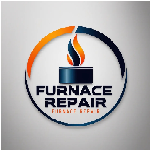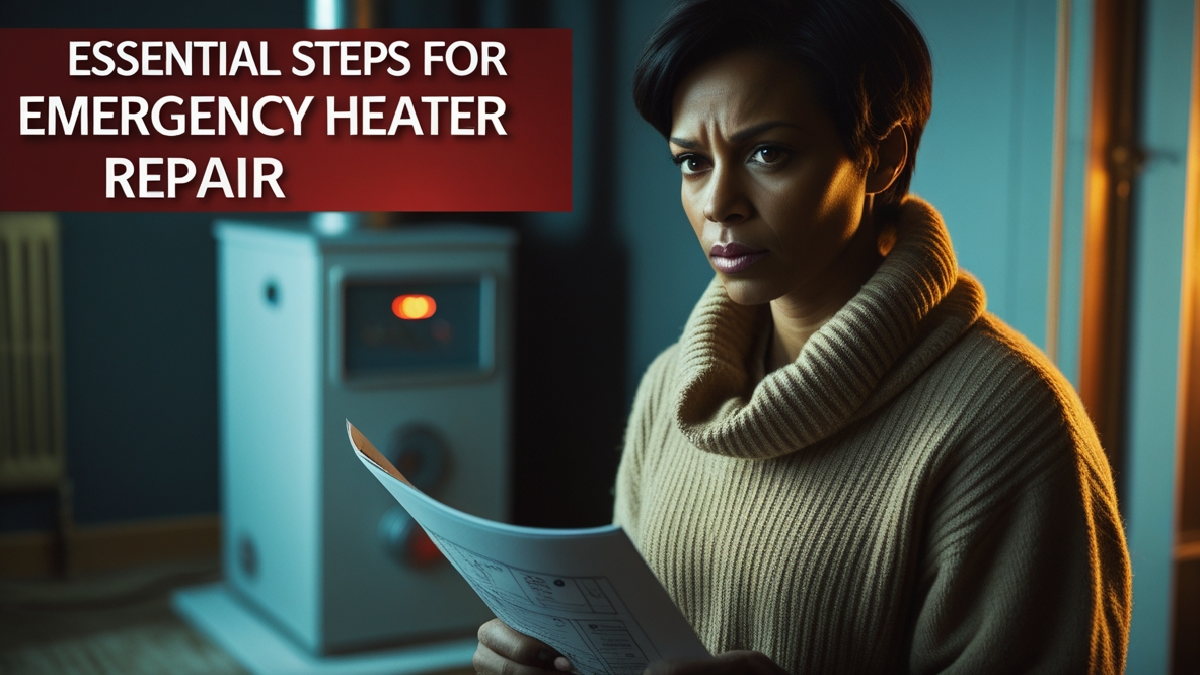Understanding the Importance of Emergency Heater Repair
When winter arrives or the temperatures unexpectedly plummet, a reliable heating system becomes not just a matter of comfort but a crucial component of home safety. A functioning heater ensures that your living environment remains warm, preventing issues like frozen pipes, mold growth, and health risks associated with cold exposure. However, heater breakdowns can happen suddenly and often at the most inconvenient times, leaving homeowners stressed and unsure of how to respond. Recognizing the importance of emergency heater repair is the first step toward safeguarding your home and family.

A malfunctioning heater can pose serious safety hazards. For example, if your heating system develops a crack or leak, it might allow dangerous gases such as carbon monoxide to escape into your living space. Carbon monoxide is odorless, colorless, and potentially fatal if inhaled in significant quantities. Additionally, electrical faults or overheating components can increase the risk of fire. Therefore, understanding the significance of prompt action during a heating emergency is vital.
Beyond safety, timely emergency repairs can also prevent more extensive damage to your heating system. Small issues, if ignored, can escalate into costly repairs or complete system replacements. By being proactive and knowing what immediate steps to take, homeowners can minimize damage, reduce repair costs, and restore comfort more quickly. This guide aims to equip you with practical, easy-to-follow instructions to handle heater failures safely and efficiently until professional help arrives.
Recognizing the Signs of a Furnace Breakdown
Early detection of heater issues can make all the difference in preventing dangerous situations and costly repairs. Homeowners should be vigilant for common signs that indicate their furnace or heating system is malfunctioning. Recognizing these warning signals allows you to respond quickly and avoid worsening the problem.
One of the most obvious signs of a heater breakdown is insufficient heat or a complete lack of warmth in your home. If your thermostat is set correctly but your living space remains cold, it’s a clear indicator that something is wrong. Unusual noises such as banging, squealing, or rattling coming from the heater can also signal mechanical issues or loose components. These sounds often precede more serious failures and should not be ignored.
Another critical warning sign is an increase in energy bills without a corresponding increase in heating usage. This anomaly suggests that your system is working harder than necessary, possibly due to inefficiencies or failing parts. Additionally, the smell of gas, rotten eggs, or burning odors can indicate dangerous leaks or overheating, which require immediate attention.
If your heater suddenly stops working or produces strange odors, it’s essential to act swiftly. Ignoring these signs can lead to complete system failure or dangerous health hazards such as carbon monoxide poisoning. Regularly inspecting your heating system and being alert to these symptoms can help you catch problems early, allowing for quicker troubleshooting and safer resolution.
Immediate Safety Precautions During an HVAC Emergency Service
Safety should always be your top priority when dealing with an emergency heater failure. Before attempting any troubleshooting or repairs, take essential precautions to protect yourself and your household.
First, turn off the power supply to your heater. Emergency Heater Repair Essential Steps for Homeowners This step is crucial, especially if you notice sparks, frayed wires, or electrical malfunctions. Emergency Heater Repair Turning off the power minimizes the risk of electrical shocks or fires during inspection. If your heater is connected to a dedicated circuit breaker, locate the appropriate breaker and switch it off.
Next, assess whether there are signs of a gas leak. The smell of rotten eggs or sulfur is a clear indicator of gas escaping from your system. If you detect this odor, evacuate your home immediately, avoiding any open flames, sparks, or electrical switches. Do not attempt to locate or repair a gas leak yourself; instead, contact your gas provider or emergency services right away.
Ensure children and pets are kept away from the heater and the affected area. If you observe smoke, flames, or unusual odors, evacuate the premises immediately and call emergency responders. Emergency Heater Repair Do not attempt to extinguish fires unless you are trained and equipped to do so safely.
Remember, when in doubt about the severity of the situation, it’s always safer to call professionals. Attempting to fix complex issues without proper training can lead to injuries or further damage. Prioritize your safety and the safety of your loved ones above all.
Step-by-Step Troubleshooting for Emergency Heater Repair
When your heater unexpectedly malfunctions, performing basic troubleshooting can sometimes resolve the problem quickly and safely. Here’s a detailed step-by-step guide to help you identify and potentially fix common issues before calling in a professional.
1. Check the Thermostat Settings
Begin by examining your thermostat. Emergency Heater Repair Essential Steps for Homeowners Ensure it is set to the “heat” mode and the temperature is higher than the current room temperature. Sometimes, the issue is as simple as the thermostat being turned off or set too low. If your thermostat is battery-operated, replace the batteries to ensure proper functioning. Confirm that the thermostat is responsive and accurately reading the room temperature. If the thermostat isn’t working correctly, resetting it or replacing batteries may restore your heater’s operation.
2. Inspect Power Supply and Circuit Breakers
Next, head to your electrical panel. Look for any tripped circuit breakers or blown fuses related to your heating system. Reset any tripped breakers by flipping them to the “off” position and then back to “on.” Replace blown fuses if necessary. Also, check if the power switch on the heater itself is turned on. Many heaters have an on/off switch; ensure it’s in the “on” position. Power issues are common causes of heater failures and are often straightforward to fix.
3. Examine the Air Filter and Vents
A clogged air filter can restrict airflow, causing your heater to shut down or operate inefficiently. Turn off the heater and locate the filter, usually near the return vent or blower compartment. Emergency Heater Repair Essential Steps for Homeowners If the filter appears dirty or clogged, replace it with a new, clean filter. Additionally, check that vents, registers, and air returns are unobstructed. Clear away any furniture, curtains, or debris blocking airflow. Proper airflow is critical for the heater to function correctly and avoid overheating or system shutdowns.Emergency Heater Repair .
4. Check for Gas Supply Issues
If you have a gas-powered heater, verify that the gas supply valve is open. If you smell gas, evacuate immediately and contact your gas provider or emergency services—do not attempt to troubleshoot or relight the pilot light yourself. For heaters with a pilot light, check if it’s lit. Emergency Heater Repair If it’s out, follow the manufacturer’s instructions carefully to relight it. If you’re unsure or uncomfortable, it’s best to call a professional to handle gas-related issues.
5. Reset the System
Many modern heaters have a reset button, Emergency Heater Repair often located on the control panel or near the blower compartment. Press the reset button and wait a few minutes to see if the system restarts. Emergency Heater Repair Essential Steps for Homeowners If the heater still doesn’t operate or the reset button trips again, this indicates a more complex problem that requires professional diagnosis.
When to Call a Professional HVAC Emergency Service
While basic troubleshooting can resolve minor issues, some problems require the expertise of a licensed HVAC technician. Contact emergency HVAC services immediately if you encounter any of the following situations: Emergency Heater Repair
– Your heater continues to fail despite troubleshooting efforts.
– You detect the smell of gas or suspect a gas leak.
– The heater emits abnormal noises, flames, or sparks.
– Circuit breakers keep tripping or fuses blow repeatedly.
– Visible damage to wiring, components, or the heat exchanger.
– The system produces smoke or unusual odors.
– You feel uncomfortable handling gas or electrical components or are unsure about safety procedures.
Professional technicians have the specialized tools, Emergency Heater Repair Essential Steps for Homeowners training, and experience to diagnose complex issues accurately and perform repairs safely. Regular maintenance and inspections by HVAC professionals can also help prevent emergencies, extend the lifespan of your heater, and ensure it operates efficiently.
Preventive Measures for Reliable Home Heating
Prevention is always better than emergency repairs. Regular maintenance of your heating system can significantly reduce the chances of unexpected breakdowns. Emergency Heater Repair Essential Steps for Homeowners Schedule annual inspections with a licensed HVAC technician to check for worn-out parts, clean components, and ensure optimal operation. Change air filters every 1-3 months, especially during peak heating seasons, to maintain airflow and efficiency.
Keep vents and registers unobstructed, and ensure your thermostat is calibrated correctly. Installing carbon monoxide detectors near your heating system and sleeping areas is essential for safety. These detectors can alert you to dangerous leaks before they become life-threatening emergencies, providing an additional layer of protection.
Additionally, consider keeping a basic toolkit and emergency contact information readily accessible. Familiarize yourself with your heater’s manual and safety instructions so you’re prepared to act quickly if needed.
Conclusion: Be Prepared for Heating Emergencies
Dealing with an emergency heater repair can be stressful, but with the right knowledge and precautions, homeowners can handle many issues safely and effectively. Emergency Heater Repair Essential Steps for Homeowners Always prioritize safety—cut power, evacuate if necessary, and call professionals when in doubt. Basic troubleshooting steps like checking the thermostat, inspecting the power supply, and replacing filters often restore heat quickly. However, complex problems involving gas leaks, electrical faults, or system damage should be handled exclusively by licensed HVAC technicians.
By staying vigilant, performing regular maintenance, and understanding the essential steps for emergency repair, you can minimize the impact of heater failures and ensure your home remains warm, safe, and comfortable throughout the winter months. Keep this guide handy, and don’t hesitate to seek professional help when needed to maintain a safe and efficient heating system.
This comprehensive guide aims to empower homeowners with the confidence to respond effectively during heating emergencies, emphasizing safety, practical troubleshooting, and timely professional intervention. Preparedness and regular maintenance are your best tools for a warm, worry-free winter.


Leave a Reply to 5 Essential Furnace Control Board Repair Tips for Quick Cancel reply